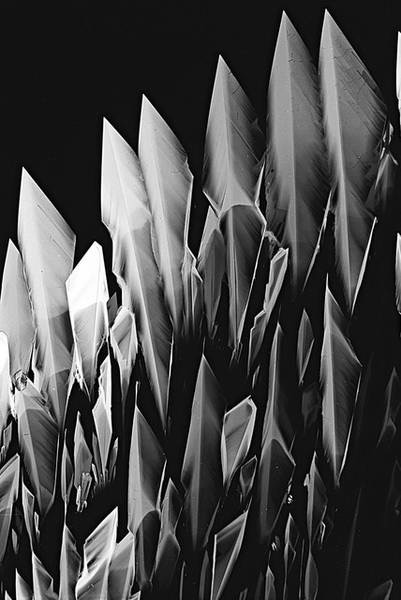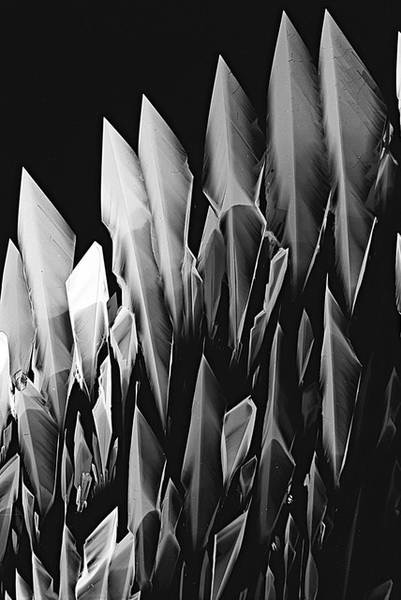Sulfanilsäure | Zinn 1 | Zinn 2
- Title
- Sulfanilsäure | Zinn 1 | Zinn 2
- Medium / Material / Technic
- Black and white photography, gelatin silver on baryta paper
Sulfanilsäure, 1957/2017
Zinn 1, 1956–1957/2017
Zinn 2, 1957/2017
from the series: »Lichtmikroskopische Aufnahmen«
Manfred P. Kage was the quintessential border crosser in the fields of art and science. He began his meandering career as a chemical engineer, worked in the optical industry, studied art and philosophy, and later became an internationally renowned science photographer. Kage’s interest in organic and inorganic substances that cannot be perceived by the naked eye brought him to scientific microphotography, which led him to discover the astounding aesthetic appeal of more than 1,600 microscopically observable structures. Together with physicist and author Herbert W. Franke, he coined the term “Science Art” in 1966.
Kage’s specific “art forms of matter” are a continuation of the subjective photography of the 1950s, which focused on presenting abstract shapes and graphic structures in black-and-white close-ups. What is more, Kage radicalized the concept of new vision as set forth by László Moholy-Nagy in the 1920s: “The camera has offered us amazing possibilities, which we are only just beginning to exploit. The visual image has been expanded and even the modern lens is no longer tied to the narrow limits of our eye.” The apparatus, Moholy-Nagy argues, “provides an impartial approach, such as our eyes, tied as they are to the laws of association, do not give” (1928).
Technological art in this sense transcends anthropological boundaries. It shows the strangeness of hidden realities and expands our sentience (cf. Herbert W. Franke, 1978).

